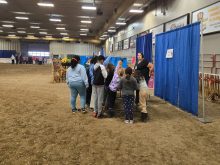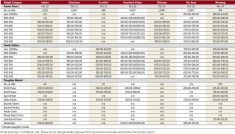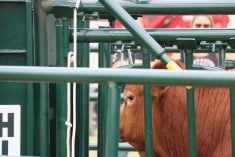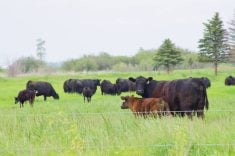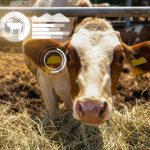The head of the animal posing between Manitoba cattle breeders Fran Wilkinson and Clarke Childs barely cleared chest height. Except for the Speckle Park exhibitors down the aisle at Brandon’s Ag Ex, the pair’s Highland cattle sported some of the event’s smallest full-grown animals outside the sheep pens.
When it came to coats or horns, however, the Highlands were the best in the barn.
Every one of those traits, including smaller size, is good news as far as Wilkinson is concerned.
Read Also
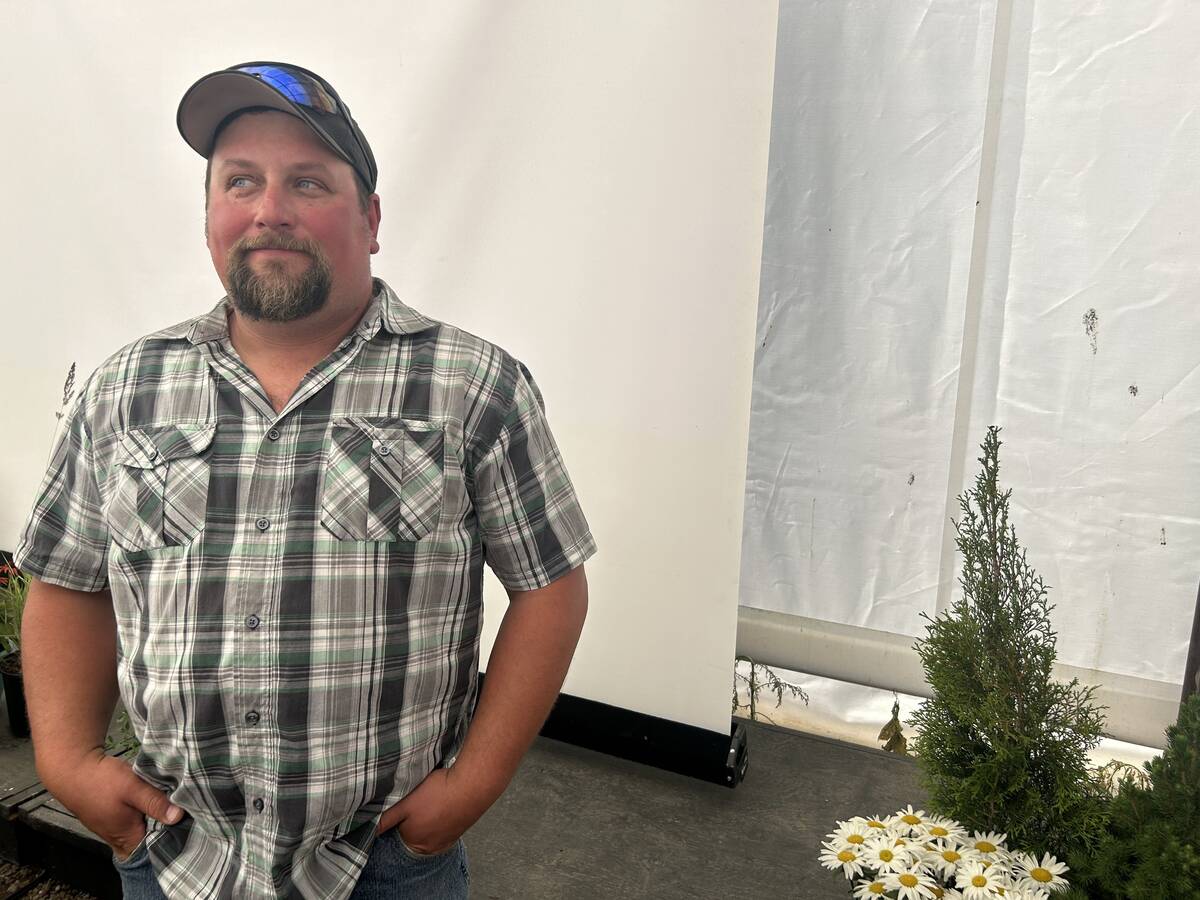
Three paths of regenerative agriculture
From integrating livestock to grassland financial incentives to precision grazing, Canadian farmers are searching for practical paths to marry farm resilience with profit
Why it matters: Smaller-framed and able to thrive on poor land, breeders say Highland cattle can fill a niche in Manitoba’s beef sector.
Wilkinson and Childs ranch on the comparatively marginal land of the Interlake. Pastures are not as rich as in other parts of the province and the region is noted for predation concerns.
Enter Highland cattle.
Bred for the Scottish landscape, hardiness is one of the breed’s most famous features. Their double coat of hair can reach up to 13 inches and is “well-oiled to shed rain and snow,” according to materials from the Canadian Highland Cattle Society.
“With the double coat of hair and thick hide, the Highland has been adapted by nature to withstand great exposure,” the society’s website states. “It is not uncommon for Highlands to shed this heavy hair coat when exposed to a hot dry climate and then grow a new one as the damp cold weather returns.”
Hardiness was among the selling points when Wilkinson was looking for a present for her partner, Clarke Childs. Wilkinson was a horse trainer, but Childs had expressed an interest in cattle. She eventually bought two Highland cattle for Childs’ 30th birthday and the couple “just fell in love with them,” she said.
Five years ago, they started breeding cattle. Their operation, Bullrush Highland Acres, is located near Komarno, about 14 kilometres north of Teulon and today runs up to 50 animals.
Small, but mighty
The average Highland cow weighs 1,100 to 1,400 pounds, according to the society, and bulls reach 1,700 to 2,000 lb.
While a small frame means less meat, Wilkinson says it also means more feed efficiency and the ability to flourish without babying. Pastures in her region are full of brush, scrub and swamp, giving an edge to a cow that doesn’t need as much grain or hay.
“The breed itself is so versatile,” she said. “They love grazing different varieties of brush. They will use their horns to pull down young poplar trees and such.”

Insulation from the hair also has an impact on the meat, she added. Beef from Highland cattle tends to lack the thick outer layer of fat and is “very nicely marbled.”
Some data suggests bigger is not always better for the farm’s bottom line.
In 2021, the Beef Cattle Research Council started gathering data on cow-calf operations across the country and across different production systems, looking for common denominators that made certain farms profitable.
That first benchmark study of the BCRC Cow-Calf Cost of Production Network found that high-profit farms tended toward “more cows, smaller cows and lower costs per cow,” according to a BCRC article summarizing the findings.
The study told a larger audience what Wilkinson had already seen on her farm: cows with lighter mature weights were associated with lower feed and cash costs. Cows in the highest profitability bracket tended to be, on average, 47 lb. lighter than those in the low profitability bracket.
“Within the benchmark farms with less than 100 cows, the difference was even greater,” the BCRC reported.
There, high-profit operations had cows about 78 lb. lighter than low-profit farms. Across high-profit farms of all sizes, mature frames averaged around 1,330 lb.
There was some drop in weaning weight (about 19 lb.) associated with the smaller mothers, but the BCRC noted that weaning weight as a percentage of cow weight was steady across the board.
“The lower costs of maintaining smaller cows appeared to offset the lower revenue on lighter calves and had positive impacts on profitability,” the organization reported.
Mothering and predation
The breed has another major checkmark, as far as Childs and Wilkinson are concerned. The cows are fierce mothers.
That could be a challenge for handling, but in an area as well known for predation as the Interlake, the couple doesn’t complain.
“We like it that way, because of predator control and things like that. We never, ever lose anything to predators,” Wilkinson said.
If one calf indicates distress, she added, “that whole herd is there straight away, checking that out. No coyotes come on our fields. You don’t see bears, nothing.”
Aside from protectiveness, the Highland society notes the rearing success of the breed. Abandoned calves are rare, even on heifers, the society says. Herds commonly see productive lifespans of 12 calves per cow, potentially limiting replacement costs.
Crosses
Wilkinson also noted the animals’ crossing potential.
Traditionally, Highland cattle were bred with Whitebred Shorthorn, a moderately framed British breed, and females from that pairing were typically retained to be matched with either Hereford or Angus bulls, although that breed choice has since expanded.
“The Highland cross female is of moderate size, hardy with a long productive life and, when mated to a fast growing sire, produces a very saleable calf while keeping cow maintenance costs to a minimum,” the society website states.
It noted experiments done at Alberta’s Range Livestock Substation in Manyberries, which looked at the performance of Hereford-Highland crosses. First-cross steers outpaced the growth rates of pure Herefords “and equalled them in carcass characteristics.”
Females were noted for their mothering and easy conception.
The downsides
Highlands may have a slower production cycle than other breeds.
Bullrush Highland Acres, for example, waits until females are two years old before breeding them, “so we’re not getting profit back until they’re three years old,” Wilkinson said.
Progressing genetics is also a problem because of limited local supply. The society directory counts 13 Manitoba members, including the Teulon couple, and Wilkinson noted their comparatively small operation is one of the bigger ones in the province.
For better genetics, Wilkinson and Childs plan to import from across the pond. The operation still has some U.K.-based semen stored for artificial insemination next year, Wilkinson noted, but they still want to inject more traditional genetics into the herd.
To Wilkinson’s knowledge, there aren’t any commercial Highland operators in Manitoba, although she expects that will change.
“They are very expensive to buy,” she admitted. “People are struggling to buy lots at the moment like you would normally. It takes time, right?”
It’s a chicken-and-egg type of problem. The small supply boosts prices for the few local Highlands that are on the market, which in turn keeps the supply small.
At the same time, Wilkinson said, there should be a place for Highlands in the local beef market. Aside from the production advantages, “people are looking for that traditional, older heritage meat now.”






